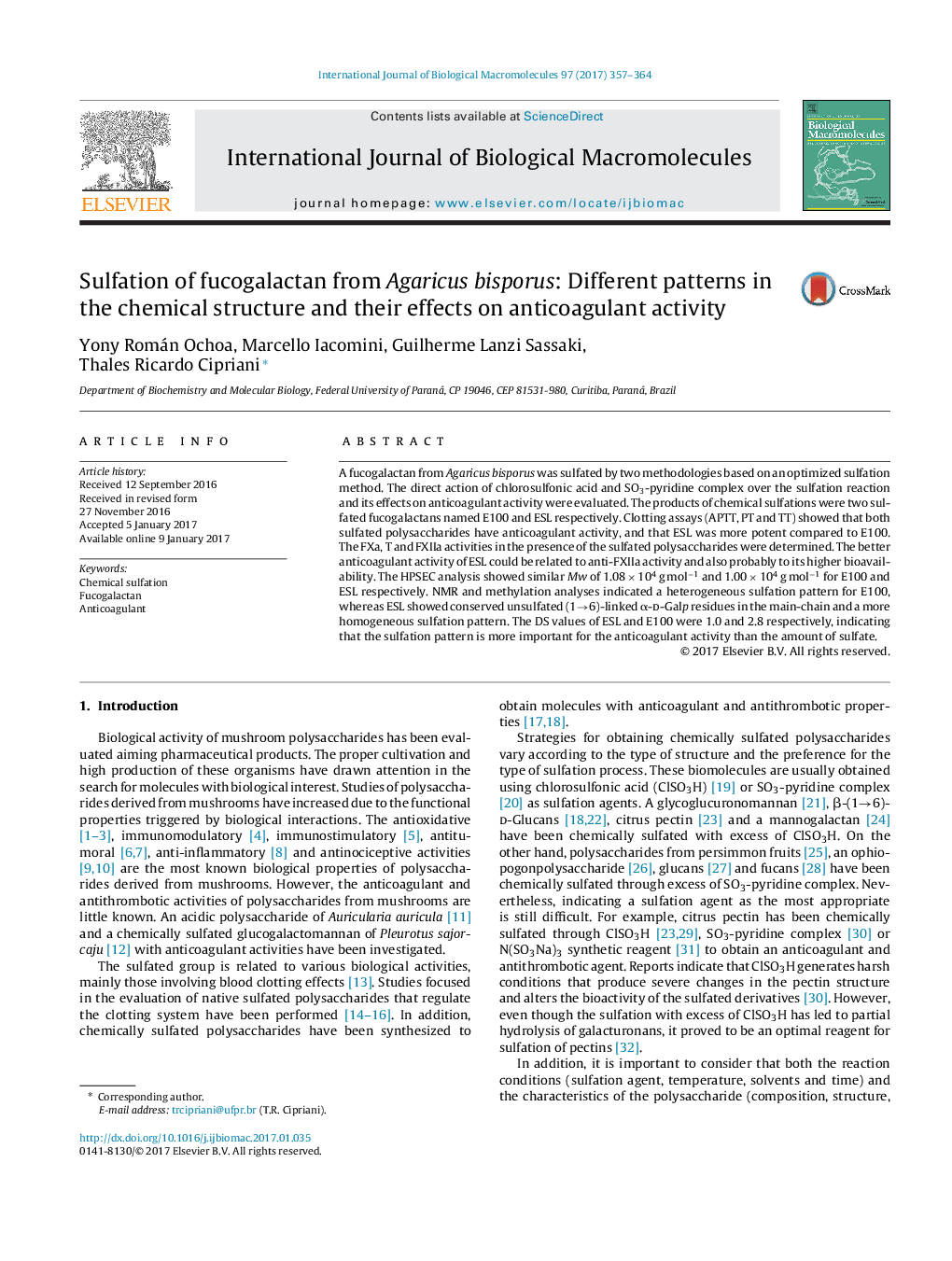| Article ID | Journal | Published Year | Pages | File Type |
|---|---|---|---|---|
| 5512610 | International Journal of Biological Macromolecules | 2017 | 8 Pages |
A fucogalactan from Agaricus bisporus was sulfated by two methodologies based on an optimized sulfation method. The direct action of chlorosulfonic acid and SO3-pyridine complex over the sulfation reaction and its effects on anticoagulant activity were evaluated. The products of chemical sulfations were two sulfated fucogalactans named E100 and ESL respectively. Clotting assays (APTT, PT and TT) showed that both sulfated polysaccharides have anticoagulant activity, and that ESL was more potent compared to E100. The FXa, T and FXIIa activities in the presence of the sulfated polysaccharides were determined. The better anticoagulant activity of ESL could be related to anti-FXIIa activity and also probably to its higher bioavailability. The HPSEC analysis showed similar Mw of 1.08 Ã 104 g molâ1 and 1.00 Ã 104 g molâ1 for E100 and ESL respectively. NMR and methylation analyses indicated a heterogeneous sulfation pattern for E100, whereas ESL showed conserved unsulfated (1â6)-linked α-d-Galp residues in the main-chain and a more homogeneous sulfation pattern. The DS values of ESL and E100 were 1.0 and 2.8 respectively, indicating that the sulfation pattern is more important for the anticoagulant activity than the amount of sulfate.
